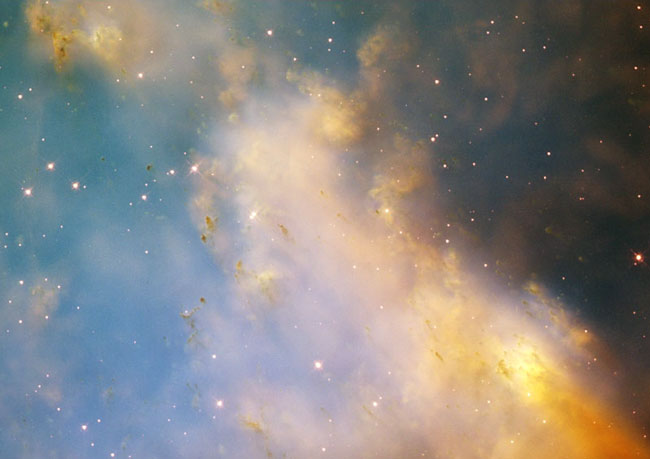Dumbbell Nebula Close Up from Hubble

Explanation:
What causes unusual knots of gas and dust in
planetary nebulas?
Seen previously in the
Ring Nebula, the
Helix
Nebula, and the
Eskimo Nebula,
the knots' existence was not predicted previously
and still not well understood.
Pictured above is a
newly released image of the
Dumbbell Nebula by the
Hubble Space Telescope showing details of its gaseous knots.
Also visible are many bright young stars and dark sheets of
interstellar dust.
The
Dumbbell Nebula, also known as
M27, is a
planetary nebula thought similar to what our
Sun
will become when it runs out of core fuel for
nuclear fusion.
Recent study of similar
cometary knots indicates that they include
concentrations of relatively cold
molecular gas and that
they change significantly as the planetary nebula ages.
APOD Update:
APOD now also available from Japan in Japanese.
Authors & editors:
Robert Nemiroff
(MTU) &
Jerry Bonnell
(USRA)
NASA Web Site Statements, Warnings,
and Disclaimers
NASA Official: Jay Norris.
Specific
rights apply.
A service of:
LHEA at
NASA /
GSFC
& Michigan Tech. U.

